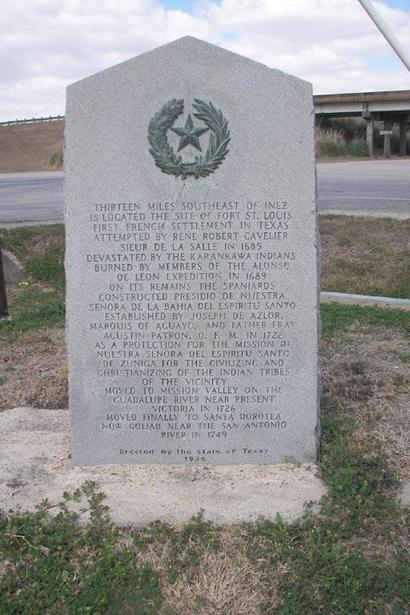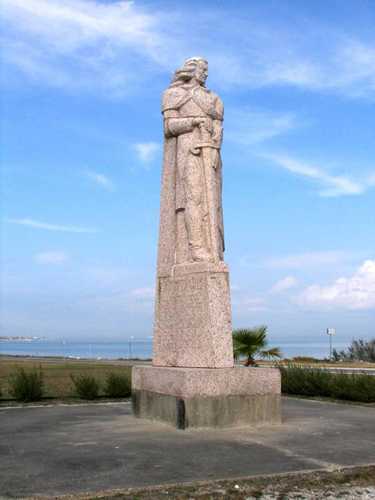Fort St Louis, Texas, and the life and death of La Salle. (original) (raw)
A remarkable Frenchman whose name I love to rattle off when lecturing about early Texas history, Rene Robert, Cavalier, Sieur de la Salle, made an impact on East Texas with his life and with his death.
First, "the life." La Salle led an expedition down the Mississippi River to its mouth in the lower delta in 1682. There La Salle stuck up the Bourbon fleur de lis and claimed and named all the land drained by the river in the name of his sovereign, Louis. Then he returned home to request permission to plant a colony near that site to anchor French claims throughout the Mississippi Valley.
In 1685, La Salle returned to plant his colony, but either through bad luck, poor navigation, or deceptive policy, he overshot his target about 400 miles and landed instead in Matagorda Bay, primarily to expand Spanish claims westward. I like the latter explanation push French claims as far westward as possible at Spanish expense. Certainly the Spanish took that attitude, as we shall see.
Anyway, once there, La Salle stayed. After pushing up a small stream, he selected the site for Fort St. Louis and ordered the others, who had remained on the coast, to hasten thither and to build a fort. Eventually, after much grumbling and arguing, which is what La Salle's colonists did best, they completed six buildings and the one nearest a creek served as a fort.
And they could argue. The problem stemmed from La Salle's recruiting method, which was to bring too many "gentlemen" who refused to work, and from La Salle's own abrasive personality. After their three boats either returned to France or sank in the bay, La Salle agreed to lead part of the men to seek relief from French settlements on the Mississippi.
Unfortunately, on the way, La Salle's men murdered him. Meanwhile, the Spanish searched for the fort to destroy it, but when they found it they learned that Indians had beaten them to the task.
Second, "the death." Late in the 1960s, Ert J. Gum, a historian of France, though born in Oklahoma, presented a paper to the East Texas Historical Association. Based on reading French records, Gum said the La Salle murder occurred somewhere in Oklahoma. Next meeting, former Rusk County Judge Charles Langford presented a counter argument that said the deed had been done in, well, in Rusk County.
I have always thought it best to leave the dubious honor of hosting our region's first recorded homicide to the good citizens of Navasota. After all, they went to the trouble and expense of erecting a statue that says that the murder happened there. And I always believe what historians tell me.

Fort St. Louis centennial marker
intersection of FM 444 & US 59, Inez, Texas
Photo courtesy of Donna Goble Hoffer
More Texas Centennial
1936 Centennial Marker :
Fort St. Louis
Thirteen miles southeast of Inez is located the site of Fort St. Louis. First French settlement in Texas attempted by Rene Robert Cavelier Sieur de La Salle in 1685.
Devastated by the Karankawa Indians, burned by members of the Alonso De Leon Expedition in 1689. On its remains the Spaniards constructed Presidio de Nuestra Senora de la Bahia del Espirtu Santo, Marquis of Aguayo and Father Fray Agustin Patron, O.F. M. In 1722 as a protection for the mission of Nuestra Senora del Espiritu Santo de Zuniga for the civilizing and christianizing of the Indian tribes of the vicintiy moved to Mission Valley on the Guadalupe River near the present Victoria in 1726; moved finally to Santa Dorotea in Goliad near the San Antonio River in 1749.
All Things Historical May 2-8 , 2004 column
A syndicated column in over 70 East Texas newspapers
This column is provided as a public service by the East Texas Historical Association. Archie P. McDonald is director of the Association and author of more than 20 books on Texas.
